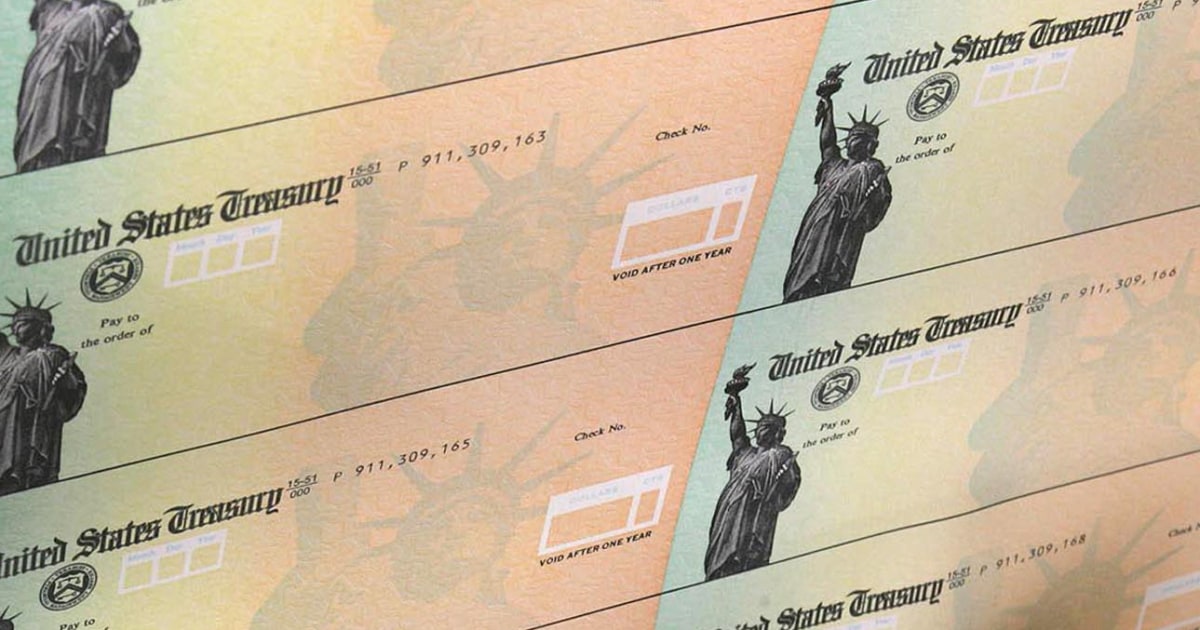US Government Phasing Out Paper Checks: Who's Affected?
The US government is gradually transitioning away from paper checks, moving towards faster, more efficient, and secure digital payment methods. While this modernization promises benefits like reduced costs and fraud, it also raises concerns for certain segments of the population. This article explores the government's shift to digital payments, identifies who's affected, and discusses the implications of this change.
The Move Towards Digital Payments: A Nationwide Shift
The push for digital payments isn't new; various government agencies have been implementing electronic funds transfer (EFT) systems for years. However, the recent acceleration of this transition signals a significant change in how the government distributes payments. This shift primarily targets Social Security benefits, tax refunds, and other federal payments. The advantages are clear:
- Reduced Costs: Processing and mailing paper checks is expensive. Digital payments significantly lower administrative costs.
- Increased Security: EFT systems are less susceptible to theft and fraud compared to paper checks.
- Faster Payments: Recipients receive their funds quicker with direct deposit or other electronic methods.
- Environmental Benefits: Eliminating paper checks reduces the environmental impact associated with paper production, printing, and transportation.
Who's Directly Affected by the Phase-Out?
While the government aims for a seamless transition, the reality is that some groups will face more challenges than others. Those most affected include:
- Elderly Individuals: Many older Americans are less comfortable with technology and may not have bank accounts or access to the necessary digital infrastructure. This could lead to delays in receiving payments and increased difficulty in managing their finances.
- Individuals in Rural Areas: Limited internet access and banking infrastructure in rural communities pose significant hurdles for transitioning to digital payments.
- Homeless Individuals: The homeless population often lacks a stable address and bank accounts, making it difficult to receive payments electronically.
- People with Disabilities: Individuals with cognitive or physical impairments may require assistance in navigating digital payment systems.
Navigating the Transition: Support and Resources
The government recognizes the challenges faced by certain groups and is implementing measures to support them. These efforts include:
- Outreach Programs: Targeted educational programs and community initiatives aim to help individuals understand and utilize digital payment methods.
- Assistance Programs: Organizations and government agencies are providing assistance to those who need help setting up direct deposit or accessing other electronic payment options.
- Alternative Payment Methods: While the goal is to move away from paper checks, alternative options, such as prepaid debit cards, might be offered as interim solutions for those unable to readily adopt digital payments.
What You Can Do to Prepare
If you receive government payments, proactively preparing for this transition is crucial:
- Open a Bank Account: If you don't already have one, opening a bank account is the easiest way to receive payments electronically.
- Enroll in Direct Deposit: Contact the relevant agency (e.g., Social Security Administration, IRS) to enroll in direct deposit.
- Seek Assistance: Don't hesitate to reach out to family, friends, community organizations, or government agencies for help.
Conclusion: Embracing the Future of Government Payments
The phase-out of paper checks represents a significant modernization effort by the US government. While challenges exist, the long-term benefits of increased efficiency, security, and cost savings are undeniable. By understanding who's affected and utilizing available resources, the transition can be smoother for everyone. Proactive planning and seeking assistance when needed are crucial steps to ensure a seamless transition to digital payments. For more information, contact your local Social Security office or visit the website of the relevant government agency handling your payments.

